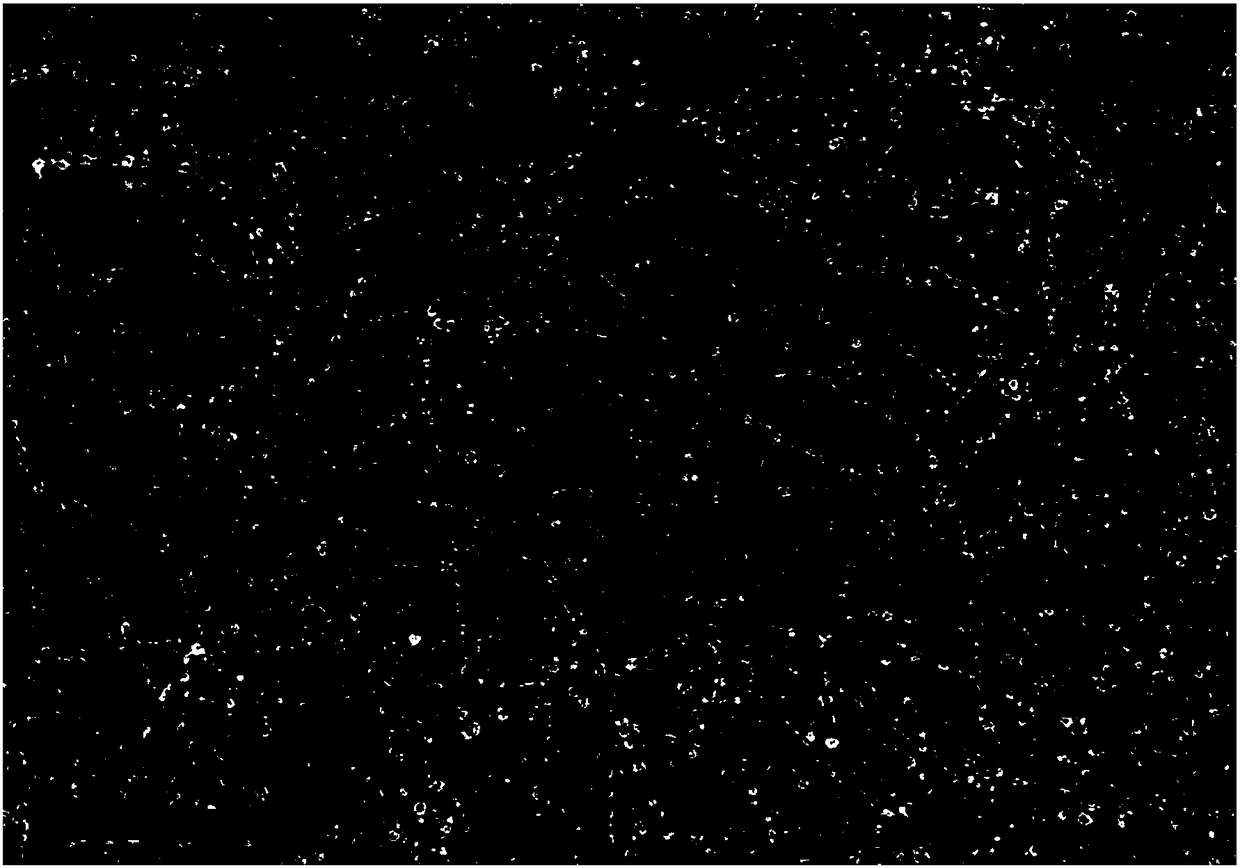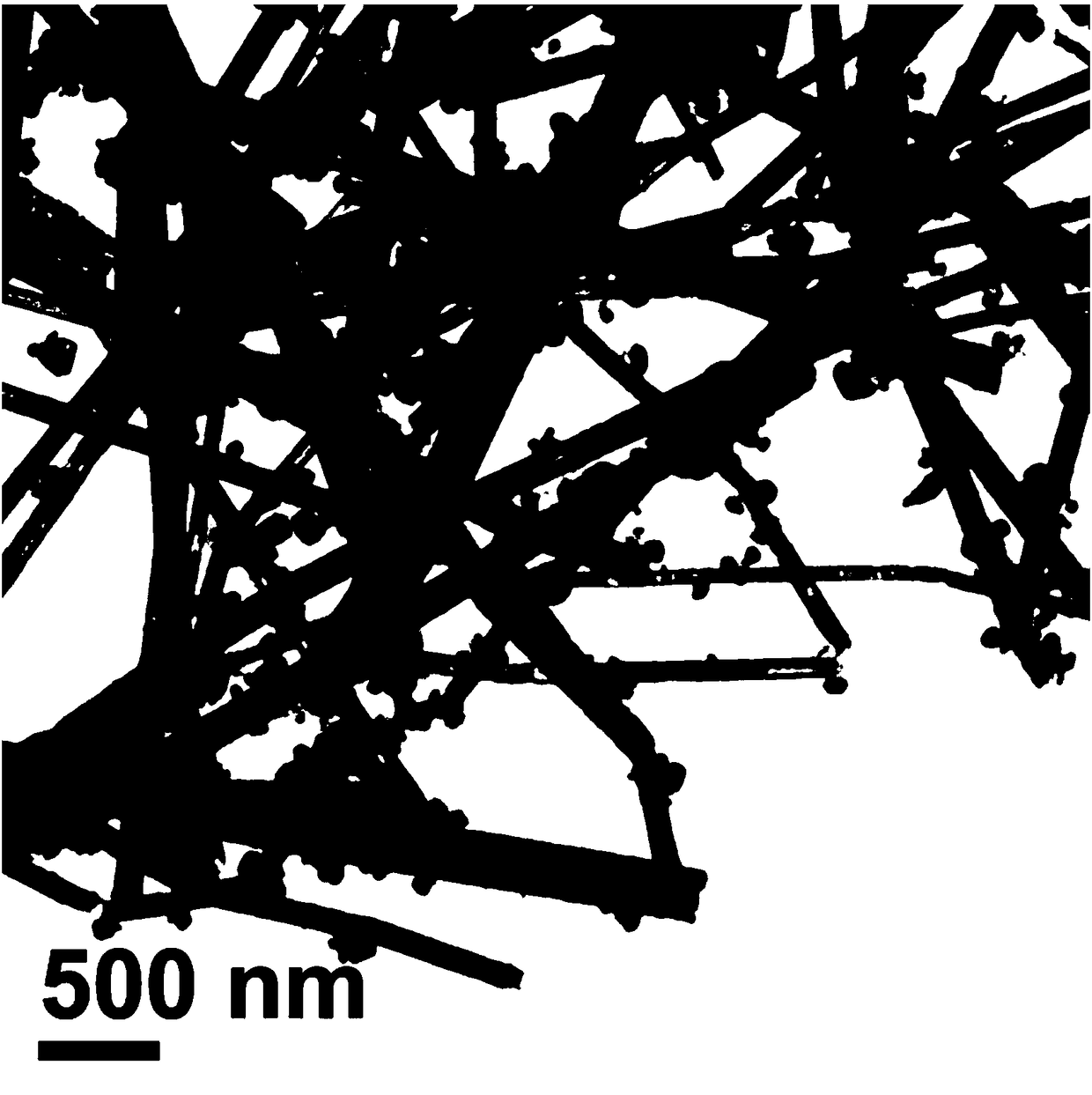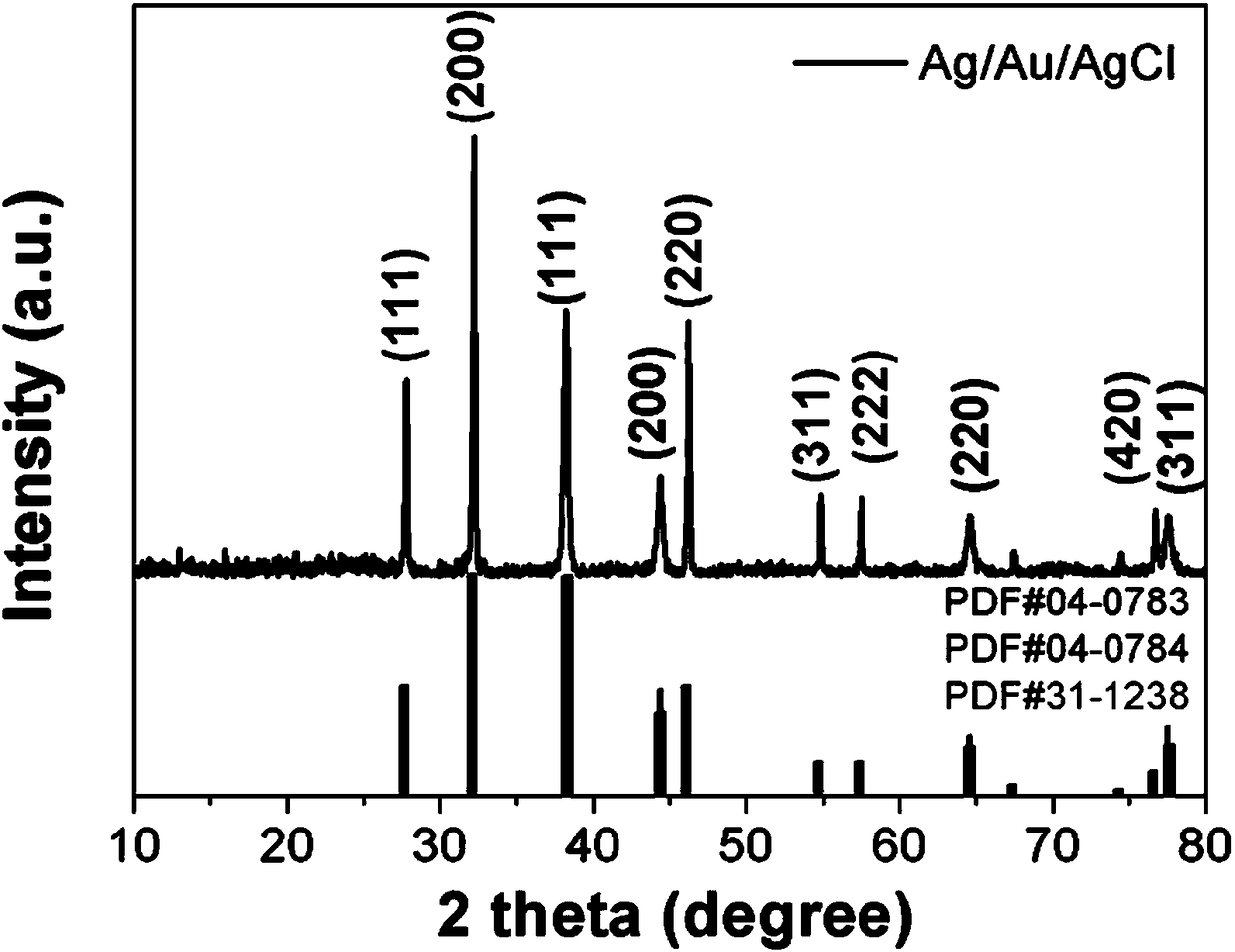Preparation method of high-activity hollow composite photocatalyst Ag/Au/AgCl
A technology of composite light and catalyst, applied in the field of catalysis, to achieve the effect of improved photocatalytic performance, easy operation and short reaction time
- Summary
- Abstract
- Description
- Claims
- Application Information
AI Technical Summary
Problems solved by technology
Method used
Image
Examples
Embodiment 1
[0041] Step 1, preparation of Ag nanowires: weigh 0.1699gAgNO 3 Add the powder into 10mL of ethylene glycol, ultrasonically disperse and stir in a water bath at 30°C, then dissolve 0.1669g of polyvinylpyrrolidone (PVP, M W =10000, molar mass M=111g / mol) and 0.0019gCuCl 2 2H 2 O (PVP concentration is 0.15mol / L, CuCl 2 Concentration is 1mmol / L), after fully dissolved, mix AgNO 3 Solution and PVP solution, and put the mixed solution into a 50mL polytetrafluoroethylene liner reactor to react at 140°C for 3 hours; then centrifuge the completed solution to collect it, and wash it three times alternately with ethanol and water above, and then place it in a vacuum oven at 50°C for 10 hours to dry.
[0042] Step 2, the preparation of Ag / Au / AgCl series hollow composite catalyst: take 15mg by weighing the Ag nanowire that step 1 makes and add in 10mL dehydrated alcohol, then add 20mgPVP (M W =58000) powder, after stirring at 30°C to fully dissolve, add 0.5mL HAuCl dropwise 4 soluti...
Embodiment 2
[0049] Step 1, the preparation of Ag nanowires, the preparation method is the same as in Example 1;
[0050] Step 2, preparation of Ag / Au / AgCl string-shaped hollow composite photocatalyst: Weigh 15 mg of Ag nanowires prepared in step 1 and add them to 10 mL of absolute ethanol, then add 20 mg of PVP (Mw=58000) powder, at 30 ° C After stirring fully to dissolve, add 1.0mL HAuCl dropwise 4 solution (0.2mM), the solution continued to react at 30°C for 10 hours; the completed solution was centrifuged, washed alternately with ethanol and water for more than 3 times, and then the obtained precipitate was dried in a vacuum oven at 50°C for 10 hours, Obtain Ag / Au / AgCl series hollow composite photocatalyst. In the obtained product, the molar ratio of Ag, Au and AgCl is 8:2:6.
[0051] Under the same photocatalytic conditions as in the photocatalytic experiment of Example 1, the photocatalyst prepared in Example 2 can degrade 93.6% of AO7 within 3 minutes.
Embodiment 3
[0053] Step 1, the preparation of Ag nanowires, the preparation method is the same as in Example 1;
[0054] Step 2, the preparation of Ag / Au / AgCl string hollow composite photocatalyst: take 15mg by weighing the Ag nano wire that makes by step 1 and add in 10mL dehydrated alcohol, then add 20mgPVP (M W =58000) powder, after stirring at 30°C to fully dissolve, add 1.5mL HAuCl dropwise 4 solution (0.2mM), the solution continued to react at 30°C for 10 hours; the completed solution was centrifuged, washed alternately with ethanol and water for more than 3 times, and then the obtained precipitate was dried in a vacuum oven at 50°C for 10 hours, Obtain Ag / Au / AgCl series hollow composite photocatalyst. In the obtained product, the molar ratio of Ag, Au and AgCl is 5:3:9.
[0055] Under the same photocatalytic conditions as in the photocatalytic experiment of Example 1, the photocatalyst prepared in Example 3 can degrade 92.9% of AO7 within 3 minutes.
PUM
 Login to View More
Login to View More Abstract
Description
Claims
Application Information
 Login to View More
Login to View More - R&D
- Intellectual Property
- Life Sciences
- Materials
- Tech Scout
- Unparalleled Data Quality
- Higher Quality Content
- 60% Fewer Hallucinations
Browse by: Latest US Patents, China's latest patents, Technical Efficacy Thesaurus, Application Domain, Technology Topic, Popular Technical Reports.
© 2025 PatSnap. All rights reserved.Legal|Privacy policy|Modern Slavery Act Transparency Statement|Sitemap|About US| Contact US: help@patsnap.com



